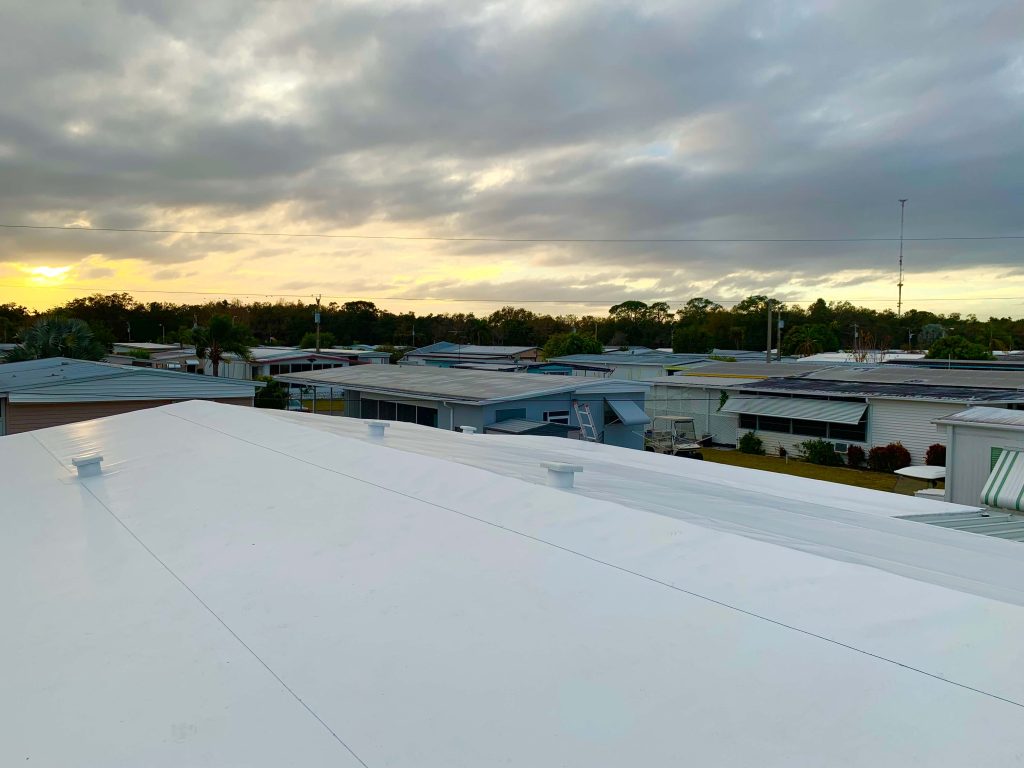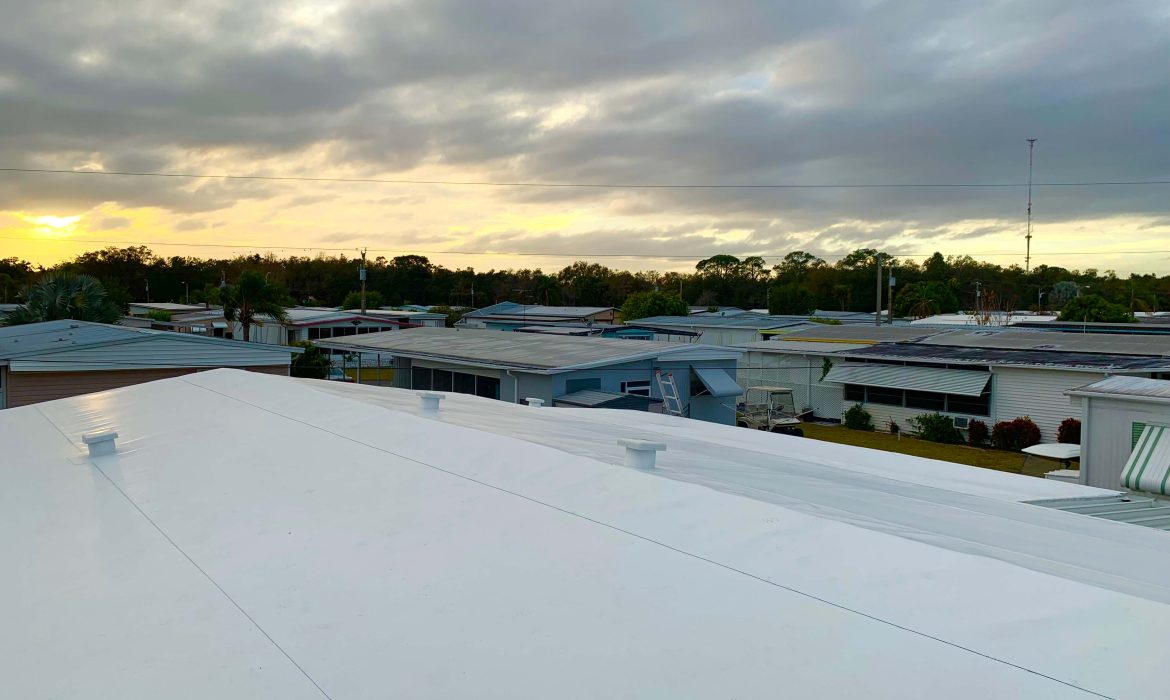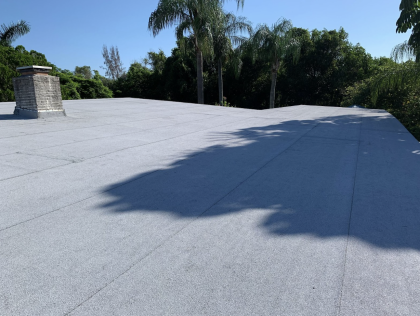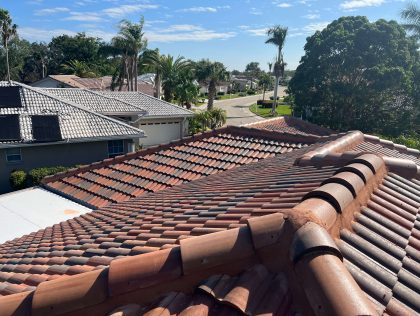If you’re in the market for a new roofing system, especially for a low-sloping roof, you’ve likely come across the term “TPO roofing.” But what exactly is a TPO roofing system, and why should you consider it for your home or property?
In this article, we’ll explore TPO roofing in detail, answering your questions and providing essential information about this increasingly popular roofing material. So, let’s get started.

What is TPO Roofing?
TPO, which stands for Thermoplastic Poly Olefin, is a single-ply roofing membrane that has gained widespread recognition for its durability, energy efficiency, and cost-effectiveness. This roofing material is designed primarily for low-sloping roofs, making it a great choice for residential homes, lanais, and commercial buildings with flat or gently sloped surfaces.
TPO rolls come in 50’ and 100’ lengths and 5’, 6’, 10’, 12’, or 20’ widths are produced. After that, these sheets are wrapped up and transported to the business location.
TPO’s intrinsic ability to deflect UV radiation has led to its popularity in the industry. TPO now holds roughly 40% of the market share for commercial roofing, according to the National Roofing Contractors Association (NRCA).
Why Do You Need TPO Roofing?
- UV Resistance:
TPO roofing is highly UV resistant, which is particularly beneficial in regions with sunny and hot climates, such as Florida. This resistance helps the roofing material maintain its integrity and prolong its lifespan even under intense sunlight.
- Economical:
TPO roofing is known for its affordability compared to other roofing options like traditional shingles or built-up roofing systems. Its cost-effectiveness makes it an attractive choice for homeowners and property managers looking to minimize expenses without compromising quality.
- Energy Efficiency:
TPO roofing can reflect a large amount of solar radiation due to its heat-reflective qualities. This reflective quality reduces the heat your home absorbs, lowering cooling costs during the hot summer months. This feature is particularly advantageous in sunny locales like Florida.
- Resistant to Mold and Dirt:
TPO roofing has an innate resistance to dirt buildup and mold development, which helps it keep a tidy and attractive appearance over time. This resistance translates into less maintenance and cleaning for homeowners.
- Durability:
TPO roofs are known for their durability and resistance to tears and punctures. This toughness ensures that your roofing system can withstand the elements, including hail and debris, without significant damage.
Pros and Cons of TPO Roofing
Pros:
- TPO is indeed a lightweight roofing material, which not only makes installation cost-effective but also places less stress on the building’s structure.
- It’s worth noting that TPO comes in various mil thicknesses, such as 45, 60, and 80, so when seeking estimates from different contractors, it’s essential to compare these specifications to ensure an apples-to-apples comparison.
- Another noteworthy benefit is that TPO can be mechanically fastened using screws and plates or fully adhered with glue.
- Furthermore, TPO can often be added over existing roof systems, reducing removal and disposal costs.
- Additionally, adding insulation underneath TPO is straightforward, with the option to incorporate tapered insulation to enhance pitch and drainage.
Cons:
- However, it’s crucial to be aware that TPO installation requires specialized skills, tools, and equipment, and the seams are heat-welded to create strong waterproof bonds.
How Long Does TPO Roofing Last?
One of the key factors that make TPO roofing attractive is its longevity. On average, a TPO roofing system can last up to 20 years or more if properly installed and maintained.
This lifespan is comparable to a 25-year shingle but often surpasses the actual lifespan of traditional shingles, which tend to degrade faster in Florida’s harsh climate conditions.
How Much Does TPO Roofing Cost?
However, as mentioned earlier, TPO roofing is generally more cost-effective than other roofing options.
Obtaining quotes from reputable roofing contractors is essential to get an accurate estimate for your specific project.
The Finest Flat Roof Roofing Materials
The cost of TPO roofing may vary depending on different factors, including the size of your roof, the difficulty of installation, and the cost of labor and materials in your location.
However, other suitable options for flat roofs include EPDM (Ethylene Propylene Diene Monomer) rubber roofing and PVC (Polyvinyl Chloride) roofing. Ultimately, the decision is based on your budget and individual demands.
Conclusion
TPO roofing systems offer a compelling combination of durability, energy efficiency, and affordability, making them an excellent choice for low-sloping roofs, especially in sunny and hot climates like Florida.
TPO roofing should be your first choice for your upcoming project if you want to invest in a long-lasting roofing solution that will save you money on energy expenses.
So, don’t wait any longer to give your roof the attention it deserves. Contact Phoenix Contracting of SWFL, LLC now, and we will leave you shocked with the results. Reach out to us today to start your roofing transformation.



